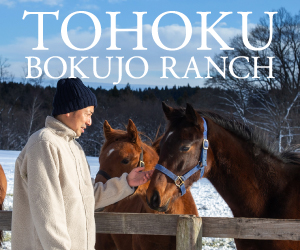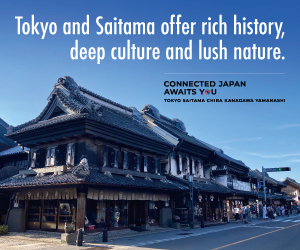AUTUMN LEAVES
ARCHIPELAGO ALIGHT WITH NATURE’S FIREWORKS
For many residents of Japan, making a trip out to see the autumn foliage is just as convivial as gathering under the springtime cherry blossoms.
It may come as a surprise to learn, however, that this was not always the case. Though the phrase “momijigari” (literally “crimson leaf hunting”) can be traced back to the “Manyoshu” — Japan’s oldest extant collection of poetic musings compiled in the Nara Period (710 to 794) — the concept of appreciating fall scenery is a tad more contemporary.
Theories suggest that, aside from the unappealing (and frankly, hazardous) distance required to reach the densely packed deciduous forests of the mountainside, the sight of red leaves meant little to the Japanese commonfolk beyond the cold and loneliness associated with winter.
The momijigari that Japan celebrates today didn’t garner popularity until the Edo Period (1603 to 1868). It was around the tail end of the prior Sengoku (Warring States) Period (1482 to 1573) that settlements started seeing an increased prevalence of religious pilgrimages — most notably Ise kō, a regular congregation of worshippers to Ise Shrine in Mie Prefecture, and Kumano mōde, a seasonal visit to the three major shrines of the Kumano faith in Wakayama Prefecture.
Gradually, the frequency of these religious pilgrimages sparked postulation among the general public that such travels could be taken as a form of leisure. That sentiment was further nurtured by the “Miyako Meisho Zue,” an 18th-century guidebook series that introduced a variety of recommended places to appreciate autumn foliage.
The guidebooks rapidly drew large crowds to see the changing leaves as a sort of rudimentary form of tourism. By the latter half of the Edo Period, momijigari had transformed into a purely secular and widely celebrated occasion that was simply about delighting in the fall season.
Interestingly, the term “gari” by itself means hunting (as one would a wild boar); as time passed, it came to take on a broader meaning of trapping smaller animals or wild birds. These days, it is even used as a synonym for harvesting, such as with the popular spring pastime of ichigo gari, or strawberry picking.
Gari took on its autumnal meaning thanks to the country’s nobility, who of course didn’t deign themselves to actually hunt. Since maple trees were best found out in the wilderness, appreciating their multicolored leaves required setting out to find them among the mountains and streams — or “hunting” for the right viewing spot, so to speak.
Today, momijigari is ubiquitous throughout Japan as a seasonal form of entertainment. There are countless hiking trails, resort hotels, hot spring facilities and even dining establishments that invite travelers to take in the sights and smells of autumn.
Yet the true delight of momijigari is that no place is the same twice. Just as weather patterns are unique from year to year, so are the annual collages that Mother Nature scatters about the tranquil outdoors. The only way to know precisely what blends of yellow, gold and red hues await is to go see them in person. So, let the hunt begin.
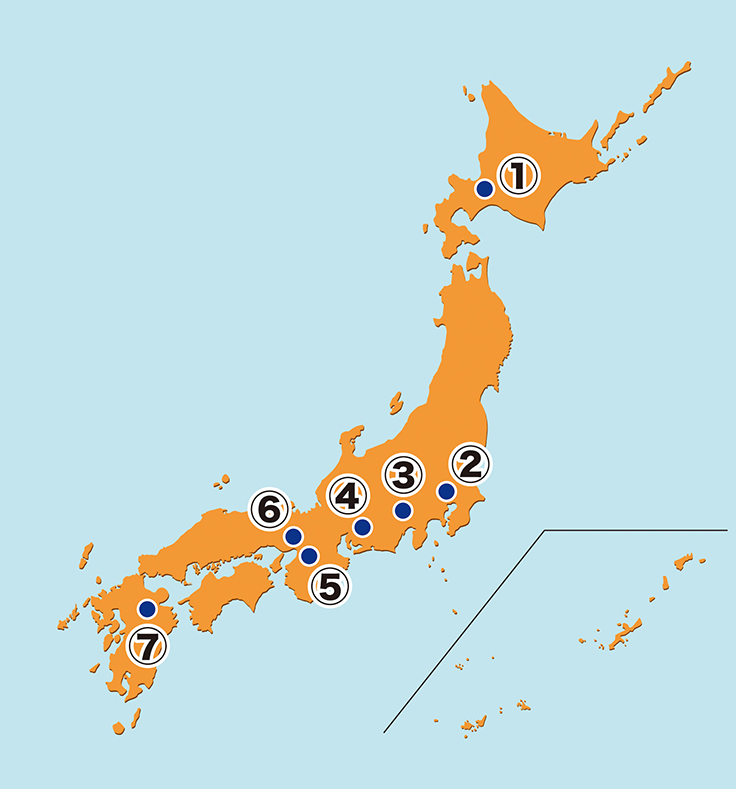
① Jozankei Onsen (Sapporo, Hokkaido)
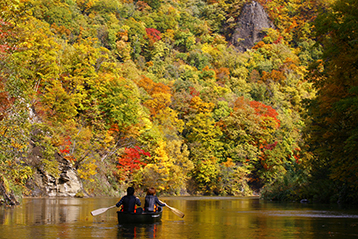
Free footbaths, flowing rivers and mountains draped in crimson leaves — now that’s paradise. This mystical swath of countryside is located just southwest of the city of Sapporo.
This area is so easy to access that it’s even earned the welcoming nickname of Sapporo’s okuzashiki or guest room. The steep, rocky geography of the valley walls reveals a gentle gradient of color that’s guaranteed to enchant.
Best time to visit: Early to mid-Oct.
② Mount Takao (Tokyo)
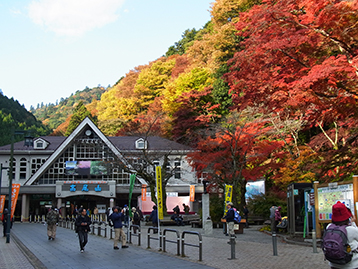
Just a hop, skip and a jump from Shinjuku, Mount Takao is one of the most convenient seasonal hiking destinations for Tokyo residents. Come fall, the mountain is layered in a fiery mix of red, yellow and stunning burgundy. There are several other attractions nearby — including hot springs and the Takao 599 Museum — so people should be prepared for this excursion to fill up the whole day.
Best time to visit: Mid-Nov. to early Dec.
③ Lake Tanuki (Fujinomiya, Shizuoka)
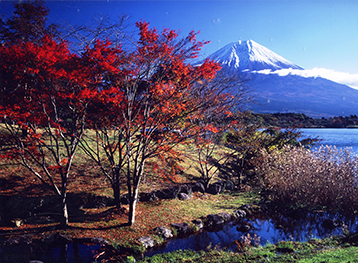
Reconnect with the great outdoors this autumn at Lake Tanuki. Spanning roughly 3.3 kilometers around, this vast lake accommodates camping, cycling, boating and even carp fishing. When the lake is perfectly still, it mirrors the distant Mount Fuji like a divine looking glass. Combine that with the scarlet leaves of the trees that border the lake and witness a truly breathtaking sight.
Best time to visit: Mid- to late Nov.
④ Korankei (Toyota, Aichi)
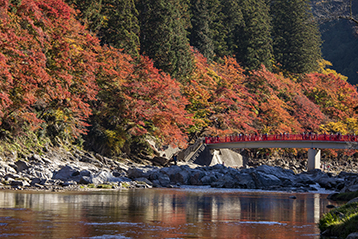
Not all autumn scenery is born from nature alone. The roots of the nearly 4,000 maple trees that blanket this valley can be traced back to the 17th century, when the head priest of the nearby Kojakuji temple started a trend by planting a few of them himself.
The fall atmosphere is festive here, with frequent tea ceremonies, handicraft workshops and taiko drum performances.
Best time to visit: Early to late Nov.
⑤ Osaka Castle Park (Osaka)
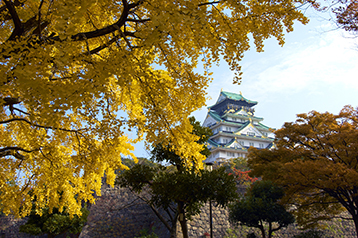
The golden shachihoko tiger carp statues adorning Osaka Castle are made all the more beautiful when the surrounding rows of ginkgo trees burst into matching vibrant hues. The castle park is bordered by a gorgeous moat with deciduous trees planted here and there among the historic structures. The view from the castle observatory offers the perfect blend of urban mecca and autumn paradise.
Best time to visit: Late Nov. to early Dec.
⑥ Mount Rokko (Kobe)
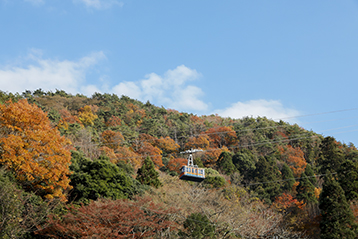
Nature meets modernity here on Mount Rokko.
Come during the day to ride the cable car,walk the outdoor modern art museum andbask in the forested mountain brimming withred, yellow and ochre hues. Once night falls,visit the garden terrace for a stunning starladenview of the city and explore the mesmerizingilluminations that pervade themountain park trail.
Best time to visit: Early to late Nov.
⑦ Lake Kinrin (Yufu, Oita)
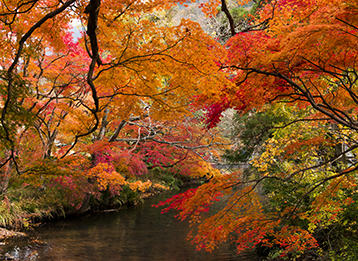
There is a mystical air about Lake Kinrin duringautumn — figuratively and literally. Thelake was formed by a natural hot spring, thewarm temperature of which produces asteamy mist that wafts across the water’s surfaceduring the colder months.
Together with the golden foliage thatstands along the shoreline, the autumnalscenery of the lake is nothing short ofpoetic.
Best time to visit: Early to mid-Nov.










